Genetic deletion of calcium-independent phospholipase A2γ protects mice from diabetic nephropathy
- PMID: 39480824
- PMCID: PMC11527321
- DOI: 10.1371/journal.pone.0311404
Genetic deletion of calcium-independent phospholipase A2γ protects mice from diabetic nephropathy
Abstract
Calcium-independent phospholipase A2γ (iPLA2γ) is localized in glomerular epithelial cells (GECs)/podocytes at the mitochondria and endoplasmic reticulum, and can mediate release of arachidonic acid and prostanoids. Global knockout (KO) of iPLA2γ in mice did not cause albuminuria, but resulted in mitochondrial structural abnormalities and enhanced autophagy in podocytes. In acute glomerulonephritis, deletion of iPLA2γ exacerbated albuminuria and podocyte injury. This study addresses the role of iPLA2γ in diabetic nephropathy. Hyperglycemia was induced in male mice with streptozotocin (STZ). STZ induced progressive albuminuria in control mice (over 21 weeks), while albuminuria did not increase in iPLA2γ KO mice, remaining comparable to untreated groups. Despite similar exposure to STZ, the STZ-treated iPLA2γ KO mice developed a lower level of hyperglycemia compared to STZ-treated control. However, there was no significant correlation between the degree of hyperglycemia and albuminuria, and even iPLA2γ KO mice with greatest hyperglycemia did not develop significant albuminuria. Mortality at 21 weeks was greatest in diabetic control mice. Sclerotic glomeruli and enlarged glomerular capillary loops were increased significantly in diabetic control compared to diabetic iPLA2γ KO mice. Glomerular matrix was expanded in diabetic mice, with control exceeding iPLA2γ KO. Glomerular autophagy (increased LC3-II and decreased p62) was enhanced in diabetic iPLA2γ KO mice compared to control. Treatment of cultured GECs with H2O2 resulted in increased cell death in control GECs compared to iPLA2γ KO, and the increase was slightly greater in medium with high glucose compared to low glucose. H2O2-induced cell death was not affected by inhibition of prostanoid production with indomethacin. In conclusion, mice with global deletion of iPLA2γ are protected from developing chronic glomerular injury in diabetic nephropathy. This is associated with increased glomerular autophagy.
Copyright: © 2024 Cybulsky et al. This is an open access article distributed under the terms of the Creative Commons Attribution License, which permits unrestricted use, distribution, and reproduction in any medium, provided the original author and source are credited.
Conflict of interest statement
The authors have declared that no competing interests exist.
Figures
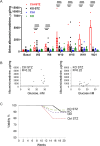
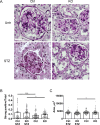

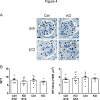
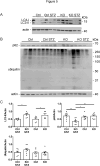
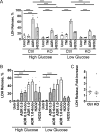
References
-
- KDIGO. Kidney Disease: Improving Global Outcomes (KDIGO) Glomerulonephritis Work Group. KDIGO clinical practice guideline for glomerulonephritis. Kidney Int Suppl. 2012;2: 139–274.
-
- Rossing P, Caramori ML, Chan JCN, Heerspink HJL, Hurst C, Khunti K, et al.. Executive summary of the KDIGO 2022 clinical practice guideline for diabetes management in chronic kidney disease: an update based on rapidly emerging new evidence. Kidney Int. 2022;102: 990–999. doi: 10.1016/j.kint.2022.06.013 - DOI - PubMed
MeSH terms
Substances
LinkOut - more resources
Full Text Sources
Medical
Molecular Biology Databases
Research Materials

